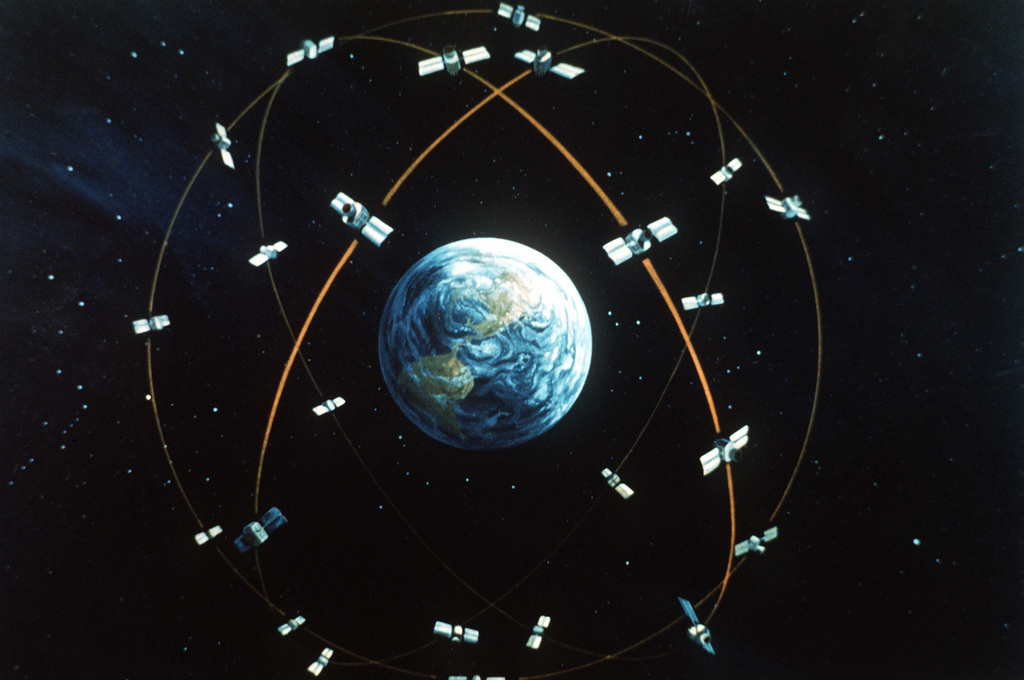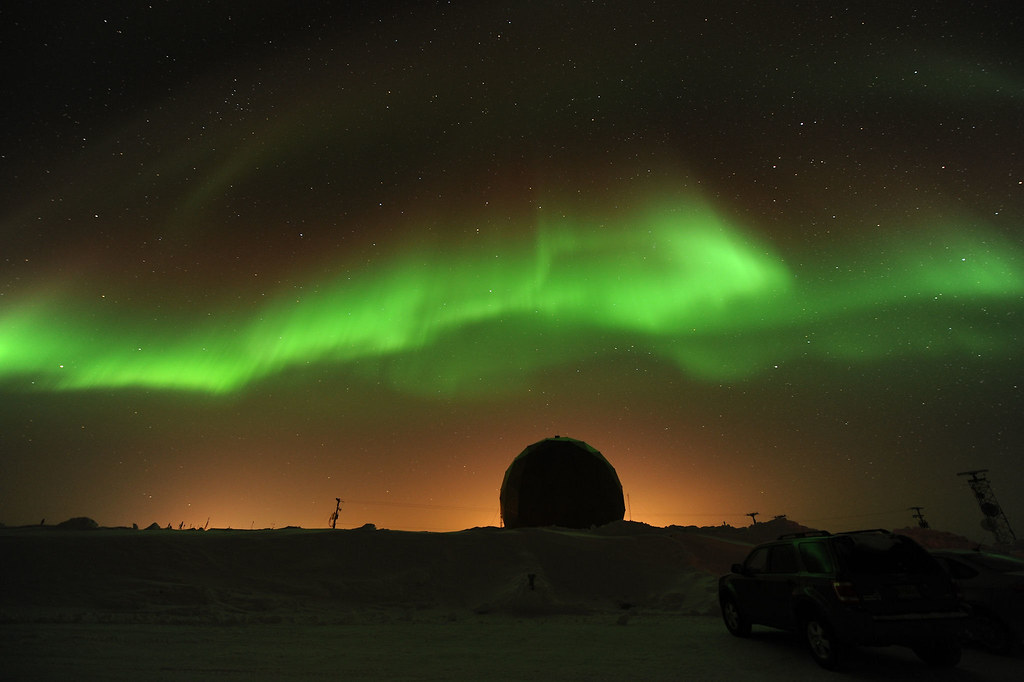
This month, a severe geomagnetic storm interrupted GPS satellites, power grids, and mobile phone networks. It results from a series of solar flares that began on Wednesday, May 8, and had its maximum effect on May 10-11. This was the first such solar storm to over in nearly 20 years.
At least five Coronal Mass Ejections (CMEs) on the sun's surface have sent plasma streams toward Earth. NOAA, the National Oceanic and Atmospheric Administration, issued a severe geomagnetic storm watch beginning Friday at noon and extending through the weekend. The Space Weather Prediction Center has labeled the storm "extreme," the first G5-level storm since 2003.
What is a Solar Flare?
The particles comprising a solar flare are high-energy hydrogen and helium atoms with all their electrons removed. They contribute radiation that travels with the gases through space. The interplanetary magnetic field, or the Earth's magnetic field, absorbs most of the radiation en route. Only rarely is the radiation from a solar flare measurable on the ground. While measurable radiation is much more common aboard aircraft in flight, it is not in amounts that would harm passengers and crew.

Potential Effects on GPS and Communication
Solar flares potentially affect the GPS because they can change the orientation of satellites in Earth's orbit or interfere with their electronic functions. GPS transmissions may be "glitchy" or less accurate if this happens. In essence, any transmissions between space and the surface of the Earth are potentially at risk as they pass through the ionosphere in the upper atmosphere.
High Frequency (HF) and satellite transmissions can be affected since HF radio waves might be absorbed by the ionosphere when the energy protons of the solar storm collide with the atmosphere and ionize atoms and molecules to create free electrons, which form a layer at the bottom of the ionosphere. Short Wave radio depends on bouncing radio waves off the underside of the ionosphere. The solar storm's interaction with the ionosphere could also interrupt those signals.

Effects On Cell Phones and Power Grids
Because cell phones rely on lower frequencies, there is little worry that the solar storm will affect cellular communications. NOAA has labeled the chance of such interruptions, including to Wi-Fi, as "slim to none" unless disruption to the power grid exists. In 1989, a solar storm caused a massive blackout of nine hours, affecting the power grid to Quebec, Canada, damaging transformers and other equipment.
The enormous geomagnetic storm known to history was the "Carrington Event" of 1859, which caused glowing red skies bright enough to read by and caused telegraph terminals to spark and catch fire.

Northern Lights (Aurora Borealis)
An aurora happens when the energized particles of the storm interact with Earth's magnetic fields. As the particles of the magnetic storm rain down into our atmosphere, they collide with the oxygen and nitrogen atoms that make up our atmosphere, causing them to glow and emit light, which we see as an aurora. Commonly known as the Northern Lights, the aurora borealis will be visible in much lower latitudes thanks to this weekend's G5 geomagnetic storm.

CNN has reported the aurora was visible in Michigan and as low as Alabama in the USA on Friday night. The news broadcaster also shared dramatic pictures of colorful skies over London and Scotland and a report featuring photos taken by a passenger aboard a commercial flight in the Detroit, MI, area.
The geomagnetic storm is expected to last through the weekend, with effects and corona sightings extending possibly until the following Monday.
2025: Aviation Deaths are Down 27.3%, But Things Didn't Feel Safer » AirBorneo Commences Rural & Regional Flights » Cessna 172 Bursts into Flames After ‘Heavy Landing’ at Adelaide’s Parafield Airport »
Comments (0)
Add Your Comment
SHARE
TAGS
INFORMATIONAL Geomagnetic Storm GPS Communication Navigation Air Travel Safety Magnetic Storm Aviation NewsRECENTLY PUBLISHED
 Why Aviation Careers Attract Students with Global Mindsets
Students with global perspectives see aviation as connecting the world. Every flight links economies, brings families back together, and moves cargo across continents. That connection matters to them.
INFORMATIONAL
READ MORE »
Why Aviation Careers Attract Students with Global Mindsets
Students with global perspectives see aviation as connecting the world. Every flight links economies, brings families back together, and moves cargo across continents. That connection matters to them.
INFORMATIONAL
READ MORE »
 KLM Cancels 92% of Amsterdam Flights in Historic Winter Storm Crisis
The European aviation network has been plunged into chaos as a relentless winter storm system, characterised by heavy snowfall and gale-force winds, has brought Amsterdam Schiphol Airport (AMS) to a near-total standstill. As of the evening of January 6, 2026, flag carrier KLM Royal Dutch Airlines has effectively surrendered its hub operations to the elements, with cancellation rates for the upcoming flight bank soaring to a staggering 92%.
NEWS
READ MORE »
KLM Cancels 92% of Amsterdam Flights in Historic Winter Storm Crisis
The European aviation network has been plunged into chaos as a relentless winter storm system, characterised by heavy snowfall and gale-force winds, has brought Amsterdam Schiphol Airport (AMS) to a near-total standstill. As of the evening of January 6, 2026, flag carrier KLM Royal Dutch Airlines has effectively surrendered its hub operations to the elements, with cancellation rates for the upcoming flight bank soaring to a staggering 92%.
NEWS
READ MORE »
 Starlux Takes Delivery of First A350-1000 for US East Coast Push
Starlux Airlines has officially entered a new era of ultra-long-haul travel. On January 6, 2026, the Taipei-based carrier took delivery of its first Airbus A350-1000, marking a pivotal milestone in its aggressive strategy to conquer the North American market, specifically targeting the lucrative U.S. East Coast.
ROUTES
READ MORE »
Starlux Takes Delivery of First A350-1000 for US East Coast Push
Starlux Airlines has officially entered a new era of ultra-long-haul travel. On January 6, 2026, the Taipei-based carrier took delivery of its first Airbus A350-1000, marking a pivotal milestone in its aggressive strategy to conquer the North American market, specifically targeting the lucrative U.S. East Coast.
ROUTES
READ MORE »



